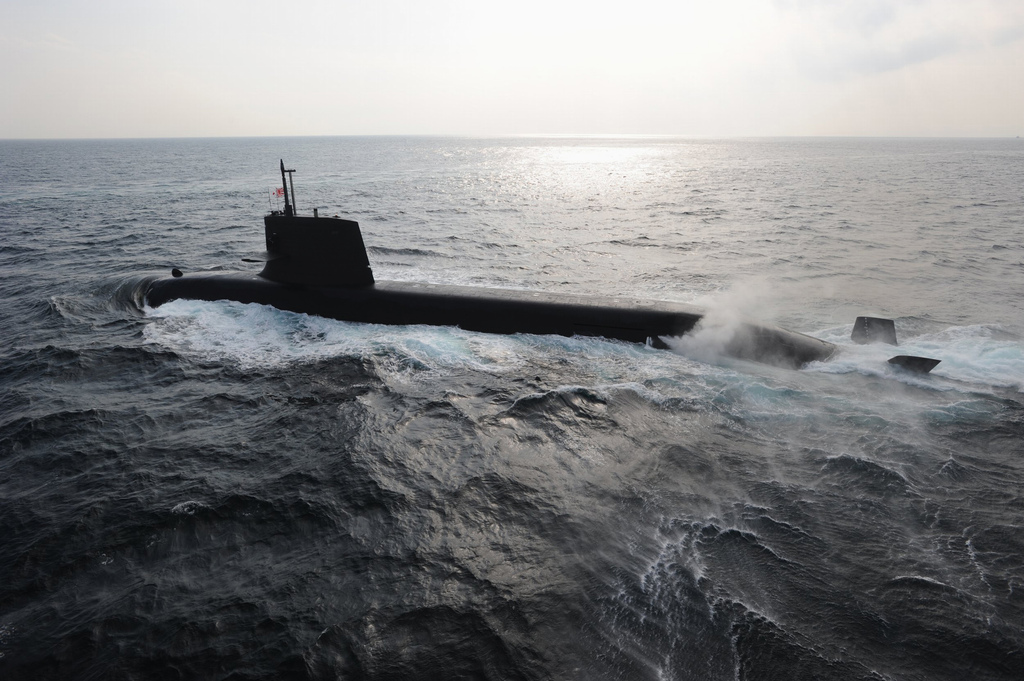Commentary
2021 / 12 / 31 (金)
ROLES INSIGHTS No.2021-05: “Prospects for Submarine-Launched Cruise Missiles in the Japan Maritime Self-Defense Force” by Ryo Hinata-Yamaguchi


On December 30, the Yomiuri Shimbun reported that the Japanese government is mulling plans to arm the Japan Maritime Self-Defense Force (JMSDF) submarines with long-range submarine-launched cruise missiles (SLCM) capable of striking ground targets.
The plan is part of Japan’s move to gain the ability to strike enemy bases in case of attacks by the adversary, which is one of the central debates in the Kishida administration’s planned revision of the current 2018 National Security Strategy and the National Defense Program Guideline.
From the national security viewpoint, the idea of possessing submarine-launched strike capabilities have their share of benefits. The foremost advantage comes from the fact that the missiles can be launched in a less-detectable manner, allowing surprise attacks and second-strike capabilities. The Japanese government is already working to strengthen and sharpen the strike capabilities of the Japan Self-Defense Force (JSDF), including the Joint Strike Missile (JSM) for the F-35s, Joint Air-to-Surface Standoff Missile (JASSM) and Long-Range Anti-Ship Missile (LRASM) for the F-15s, upgraded version of Type 12 Surface-to-Ship Missile (SSM), as well as research on hypersonic weapons systems like the Hypersonic Cruise Missile (HCM) and the Hyper Velocity Gliding Projectile (HVGP). Thus for Japan, the SLCMs would diversify the JSDF’s strike capabilities essential for defense and deterrence.
Yet while the reported plan is a promising new direction in Japan’s defense planning, much comes down to how it is pursued.
First, there are questions regarding the missiles. According to the Yomiuri article, the SLCM under consideration will be based on the Type 12 SSM, which has a range of approximately 1,000km. While the 1,000km range qualifies the missile as a “standoff” asset that is beyond the reach of enemy interceptors, they fall short of effective strike assets against enemy bases. That said, if Japan seeks to gain truly effective strike capabilities, it will need to consider acquiring missiles of a much longer range – not only making it go beyond the “standoff” category but igniting debates on whether the move adheres to the nation’s policies to possess capabilities “minimum necessary for self-defense.”
Second, there are also questions about the submarines that will launch the missiles. Currently, the JMSDF has two submarine flotillas that operate the 2,750t Oyashio-class and the 2,900t Soryu-class, and the new 3,000t Taigei-class is expected to enter service from 2022. Yet despite the efforts to upgrade the JMSDF submarine fleet, there are problems. Above all, the JMSDF submarines are conventional. As a result, they are inferior in speed to nuclear submarines, making them more vulnerable during strikes – even if Japanese submarines are known for their extremely quiet nature.
Another problem regarding the JMSDF’s current submarines is that none have vertical launch systems (VLS). Even though the Oyashio, Soryu, and Taigei-classes can launch SLCMs from its torpedo tubes, the capacity to accommodate and launch the missiles is nonetheless far limited compared to submarines that have VLS installed.
Third, there will be costing issues with the new missiles, but more so if Japan decides to construct a new class of submarines suited for strikes. The draft defense budget for the 2022 fiscal year stands at 5.4 trillion yen (47.2 US Dollars). But although Japan’s defense budget has marked the highest record for the last eight consecutive years, the fiscal constraints are already high, given the shopping list for new capabilities and operations and maintenance costs. Moreover, human resource shortages are severe in the JSDF – particularly in the JMSDF where enhancements are most needed to meet the security challenges. Hence the dilemma is that although there are solid rationales for striking submarines from the national defense viewpoint, the costs and constraints would be overwhelming.
Given the growing uncertainties in the regional security environment, Japan’s ability to strike enemy bases is essential to defend and deter against the threats the nation faces. That said, the trick is to find the most cost-effective means that efficiently uses Japan’s limited resources and assets while also providing maximum effects.
***********************************************
Ryo Hinata-Yamaguchi is a Project Assistant Professor at the Research Center for Advanced Science and Technology at the University of Tokyo and an Adjunct Fellow at the Pacific Forum. Ryo can be followed on Twitter at @tigerrhy.
同じカテゴリの刊行物
コメンタリー
2024.10.23 (水)
![]() 研究会「自由・民主主義の動揺と再編」
研究会「自由・民主主義の動揺と再編」
コメンタリー
2024.10.15 (火)
![]() 研究会「東欧、中・東欧、バルカン諸国の自由・民主主義の帰趨」
研究会「東欧、中・東欧、バルカン諸国の自由・民主主義の帰趨」
Commentary
2024.09.18 (Wed.)
![]() 研究会「安全保障政策研究のための衛星画像分析」
研究会「安全保障政策研究のための衛星画像分析」
コメンタリー
2024.09.11 (水)
![]() 研究会「自由・民主主義の動揺と再編」
研究会「自由・民主主義の動揺と再編」

